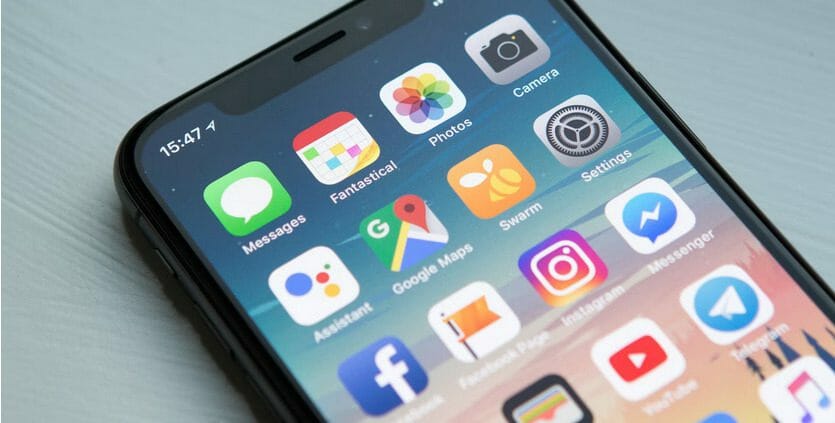Mobile App Development 101: 13 Steps to Take
Mobile apps are growing by leaps and bounds, forcing entrepreneurs and enterprises to adopt new solutions in digital commerce. From communication, customer response, online payments, online ordering, and online shopping, mobile apps provide unlimited capabilities to enterprises.
Why Invest in a Custom Mobile App?
Beyond communication, customer service, and online payments, here’s why you should invest in a custom mobile app:
- Security. Nowadays, customers are showing an inclination to online shopping, warranting the protection of their data, including personally identifying information and financial data. Doing this requires a secure solution to store and protect your consumers’ data.
- Accessibility. Mobile apps are accessible because they’re available 24/7. Everyone owns a smartphone, making mobile apps the go-to option when shopping, paying, or conducting online transactions.
- Customer service. Mobile apps are a great way to bolster your customer service, ensuring you connect and respond to your customers’ needs anytime and anywhere.
- Competition. Customers are using mobile apps to shop and pay for services. This means that lacking a mobile app solution denies you countless opportunities to enterprises with one. In addition, enterprises with mobile apps stand to attract and retain more customers than those without.
- SEO. Your mobile app improves your SEO rankings, leading to your brand’s growth and discoverability in platforms such as Bing, Google Ads, and Yahoo.
The above benefits underscore the importance of an app in the contemporary business landscape. Although developing a custom mobile app remains a priority to many enterprises, very few businesses know how to approach the mobile app development exercise.
USE OUR APP COST CALCULATOR TO ESTIMATE THE COST TO BUILD YOUR APP!
13 Steps to Developing a Custom Mobile App
In this article, I will walk you through the thirteen steps to take to develop your first mobile app.
1. Idea formulation
The first step to developing any meaningful app starts with a simple idea. This idea is sparked by a need. When faced with problems, we create solutions. Your mobile app development must start with a simple idea that will gradually develop into a fully-fledged solution to an existing problem. This idea will be your app idea, it will help you envision the type of app you want to develop, its features, and associated benefits.
2. Competitive market research
The second step to developing your app is doing extensive market research. The market research must focus on knowing your competitors, understanding your market positioning, knowing your competitors’ products and services; and what makes them unique. Competitive market research helps you identify positioning factors; these are factors that will set you apart from the competition. It’s only by knowing what your competitors have that you can build a competitive positioning.
3. Define your app features
When developing your mobile app, understand that fast and light apps are significant for a wide range of devices – smartphones, laptops, tablets, and even wearables. Fast apps refer to apps with a higher response rate while light apps refer to simple, lean apps that do not contain a whole load of features.
When defining your features, it’s important to pay attention to the following aspects:
- Define the core features of all the competing apps
- What are the specific features unique to each of the competing apps?
- What features are missing from other apps?
- Are there any specific features users find unique or exciting?
Answering these questions will help you pinpoint the specific features your app should have.
4. Create a wireframe for your app
A wireframe refers to the general strategy, layout, or plan your app will follow. From an app’s conception to its completion, the wireframe defines the strategy that will be followed. It’s a way of laying down your thoughts, feelings, and attitudes towards your app. It’s a way of communicating the specific feelings or values your app will convey.
To create a wireframe for your app, follow the following steps;
- Configure a mobile frame. Choose a mobile frame with the features you’re planning to incorporate into your app. As a natural inclination, the structure should prevent you from packing too many features in a single screen.
- Employ design patterns. Remember the primary priority in UX user design is familiarity. Users are likely to draw on previous interactions with a new product when they notice a recognizable user interface.
- Scalability. Verify scalability by asking whether an iPhone 15 will display your app well. Scalability is the ability of your app to adapt to different screen types and screen orientations without losing its quality.
- Develop a minimum viable product. A minimum viable product is a prototype of the actual product. It helps you test and evaluate your app’s product features before investing in the final product.
The wireframe helps you define technical specifications, including key functionalities and tools your apps will capture to deliver that superior user experience.
5. Choose the right platform and technologies
Two main factors will determine which platform to select – your target audience and your budget. Each operating system has its unique set of advantages and disadvantages you must consider when selecting.
- For instance, building for iOS is a great choice if you’re looking for a platform with a broader appeal. However, iOS is more expensive than other platforms.
- Android has over 2 billion users making it the most widely used operating system in the world. Creating for Android will give you better visibility and allow you to target a larger audience.
Selecting the right platform will save you money and allow you to target the right audience.
6. Developing the minimum viable product (MVP)
Now it’s time to start building your app immediately after you understand your target audience. When designing, consider a few key features:
- Functionality: Check whether your app has all the key features and functionalities listed in the description, including social media functions, in-app purchases, and other features accessible through the website.
- Speed: Your app’s user experience starts here. Ensure your app is as quickly as possible. You’ll lose 60% of your customers if your app takes more than 3 seconds to load.
- User experience design: All software must have outstanding designs. However, having a beautiful app is not enough, your app’s user experience is critical. Your users must feel empowered to use your app. Make navigation easy, set clear graphics, appealing features, and an intuitive design.
The minimum viable product will help you identify specific features your app must capture.
7. Include animations and visual components
What distinguishes your app from the competition are the visual elements and animations. The visual graphics that appear in your app are the visual components. The movement and alteration of these visuals is what is called animations. You must include a few components in your app to make it stand out from the competition.
Some of the components to include are:
- Branding: Your app must communicate your company’s identity. Ensure the imagery and theme of your app matches your brand’s identity and the color of your website.
- Navigation: Your navigation should be simple, intuitive, and easy to use. Your users must locate what they’re seeking and finish their jobs without issues.
- Social media: It must contain a social media interface to enable users to share their experiences with friends and followers on social media. If your app has a social component, ensure it has all the integrations required for different social media channels.
Incorporating these features will ensure your app stands out in a pool of apps.
8. App testing
App testing is the process used to examine an app’s usability, consistency, and accuracy. Please ensure to test your app before going live. Apps optimized for popular mobile OS configurations function better, allowing for a smoother user experience across different platforms.
Follow the following stages to test your app:
- Documentation testing: This step of mobile app development starts with screen design, navigational components, and other crucial elements of an app. Before the app design begins, this step allows developers to correct any inconsistencies in the overall design, layout, and component selection.
- Functional analysis: Functional analysis helps you test how your mobile app responds to the market standards. Keep the following components in mind when conducting functional analysis.
- Usability evaluation: This evaluation step examines whether the user interface aligns with the industry standards. Usability testing allows comfortable browsing, ensuring your app users seamlessly use the app without any navigation issues.
- Security examination: This step of testing examines whether your app’s security conforms to the security standards set by authorized bodies. It examines your app’s stance towards user privacy and security.
- Certification testing: Certification testing examines whether your app conforms to industry standards, terms of use, licenses, and agreements. It also looks at whether the app adheres to all technical specifications of stores like Google Play, Windows, and App Store.
Testing allows you to map technical features and other specifications before launching the final product.
9. Deploy the beta version online
Every version can attract early adopters. Deploying the beta version allows your app to be discovered, which is a crucial step in making your app popular. Early adopters offer a wealth of insightful commentary on the advantages and disadvantages of your app. This allows you to make progressive changes and improvements based on user feedback.
10. App launch
After correcting any anomalies in the beta version, you can proceed to officially launch your app. In your app launch, target potential consumers, partners, and potential stakeholder groups (media, government, and private sector). Once you’ve launched your app, it’s time to debut it in the Google Play Store or Apple’s App Store, depending on the operating system you selected for your app.
11. Marketing Plan
Your app won’t be discovered unless it’s advertised and marketed to the relevant audiences and through the right platforms and channels. After the app launch, you can proceed to put together a small team of talented marketers, social media influencers, and advertisers. Design a marketing plan carefully detailing your marketing objectives, user goals, and overall adoption tactics. Remember to partner with influencers or celebrities to create visibility and attract new users.
Your marketing plan must incorporate the following steps:
- Start with market research to understand similar apps in your market and their features.
- Proceed to the target audience, identifying their needs, motivations, values, and user preferences.
- Identify relevant market strategies, identifying approaches likely to work.
- Set realistic and measurable goals and objectives, measuring your app’s performance and overall adoption and usability.
- Select specific media channels and identify specific tactics, identifying which approaches are likely to work and which ones are likely to fail.
- Set a budget and a realistic plan. The budget must incorporate the expenses for different marketing activities.
- Collect metrics, including user behaviors, adoption trends, and feedback.
- Develop a content plan and schedule, identifying which content you’ll post on specific days.
The marketing plan allows your prospective users and target market to discover your app, providing you with much-needed visibility, adoption, and retention.
SCHEDULE A CONSULTATION WITH AN APP DEVELOPMENT EXPERT TO GET A CUSTOMIZED QUOTE!
12. Constant improvements
After you’ve vigorously marketed the app to different audiences and platforms, now it’s time for constant improvements. The app development lifecycle allows for gradual, progressive improvements in the app’s overall design and functionality. Incorporate improvements, ensuring you scale your app depending on new improvements or new feedback in the market.
13. App maintenance
You must constantly check your app for bugs and outdated versions of product features. For instance, you may want to deploy a remote team of experts to assess and evaluate your apps. App maintenance prevents unprecedented attacks, enhancing your safety and that of your users. App maintenance helps you identify improvement opportunities while acting as a security safeguard against unprecedented cyber threats.
NS804 – Simplifying Your Mobile App Development
NS804 offers custom-built apps for enterprises of different sizes and industries. Whether you’re in hospitality, government, retail, manufacturing, or finance, we provide custom-built mobile app solutions.
Our expertise spans both iOS and Android with proficiency in different operating systems. We provide efficient, trusted, and transparent mobile app development solutions tailored to your needs.
In addition, our services cover both an app calculator and a minimum viable product, allowing you to accurately estimate how much it will cost and how precisely your app will function or perform before you invest in it.
Contact us today for custom-built Android and iOS apps.

 https://unsplash.com/photos/9e9PD9blAto
https://unsplash.com/photos/9e9PD9blAto








 https://www.pexels.com/photo/blue-and-white-logo-guessing-game-5444435/
https://www.pexels.com/photo/blue-and-white-logo-guessing-game-5444435/
Leave a Reply
Want to join the discussion?Feel free to contribute!